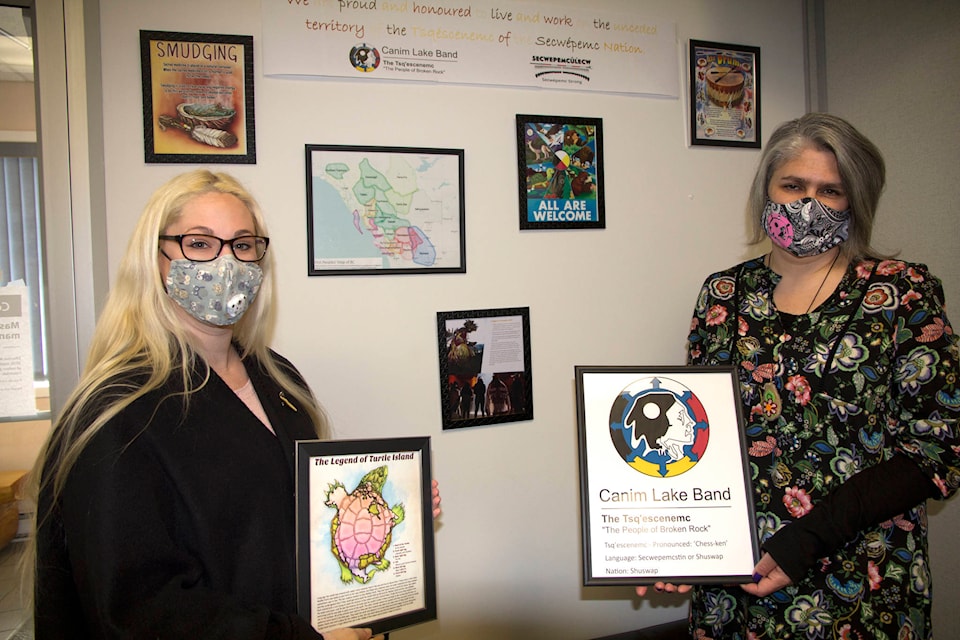Gillian Belicka and Mikara Pettman never expected so many people would want to be part of their reconciliation circle.
But there was so much interest among staff in 100 Mile House’s Ministry of Children and Family Development office that they had to break the circles into smaller teams and start holding them virtually.
“The first circle we held every staff member participated,” said Belicka, a social worker in 100 Mile House for the past six years. “We had some very meaningful discussions about people’s experiences in the community and some action points we’ve been working on.”
The circles, which have no hierarchy or rank – just equality and a safe space to share and learn - were suggested as a way to promote truth and reconciliation during Orange Shirt Day. Too often, Pettman said, reconciliation is seen as a “ticky box” word with no real substance. Even the territorial acknowledgements - used to start every meeting - are often seen as lip service without truly acknowledging the land they are on.
The two social workers hope to change that through various actions, such as their reconciliation circles, as well as by hanging a territorial banner and pictures and maps in their office’s foyer, highlighting the local bands’ language and Indigenous teachings. To do so, they reached out to the local bands - they serve Canim Lake as well as Dog Creek and Canoe Creek - for input.
All of this, they say, will help connect them with their clients and their culture. Belicka, an Indigenous former youth in care, said the move to hang the teachings was “incredibly powerful,” noting in the past Indigenous people weren’t allowed to speak their own language or practice their culture, especially in a government office.
READ MORE: Orange Shirt Day lessons of past in today’s classrooms
Pettman agreed, saying it’s meaningful for Indigenous people to be able to go into the building and see their culture reflected.“When I see those things it almost brings a tear to my eye,” she said. “The building is acknowledging my culture.”
A Cree and Métis from Tallcree First Nation, Pettman’s father is a survivor of St. Augustine Residential school but it wasn’t until university that she understood the true impact of residential schools. A support worker in Child and Youth for Mental Health for the past three years, Pettman said now “it makes me brave to think of my ancestors watching me.”
As part of her work, Pettman uses a medicine wheel when she goes out into the community. She has also started going out into the community one day a week and is looking holistically at the spirits and the cultures of the families and the people they work with, so when they intervene they can do it in a soft way.
“Our ancestors didn’t struggle and go through all the things they went through for us to be complacent,” she said. “They fought hard for our culture to continue.”
Eventually, the two women would like to invite some community members or Indigenous elders to join the circles. They also want to put up a map to represent Indigenous locations around Canada, so people here can mark where they’re from.
“It’s not just our local community we work with, it’s people across Canada,” Belicka said. “We’re all learning together.”
@kellysinoski
kelly.sinoski@100milefreepress.net
Like us on Facebook and follow us on Twitter.
